Last updated on July 17, 2025
The information and files I have collected so far about NewLife Computer Corporation, and their accelerators and addons for the 128k, 512k, Plus: UltraMac, NewLife 1, 2, 25, Accelerator! Plus; SE: 25SE, 33SE, SE video, Accelerator! SE; and Classic: 25CL, Accelerator! Classic. They announced and started development on an accelerator for the LC/Performa 610, but it was never released. I also have a list of other accelerators with photos and links to reviews and advertisements.
For the Macintosh 128K, 512K, 512Ke and Plus
UltraMac (Ultra Mac) memory expansion
Up to 4MB memory expander for the 128K, 512K, 512Ke.
Optional SCSI connector. May require 128K ROMs, need to find out.
NewLife 1 / Ultramax (NL-0001-02 / CD101D1-3)
Developed by Calmos Semiconductor (CD101D1-3) and initially released as the Ultramax, then renamed the NewLife 1 (NL-0001-02).
Designed for the Mac 128K*, 512K* and 512Ke, the NewLife 1 is up to 20% than a Mac Plus:
- a 8MHz MC68HC000 CMOS processor (up to 20% faster than the original Plus CPU),
- optional SCSI connector,
- 4 SIM sockets for memory expansion up to 4 Megabytes
*Note: The Mac 128K and 512K required the Apple 800K internal disk drive kit and it’s included 128K ROM upgrade.
- Drivers: None required.
- Manuals:
- 1990 v2: manual corrects some of the errors, but still contains the error that the board will operate with 0MB, it will not.Up to 4MB memory expander for the 128K, 512K, 512Ke.
- 1990 v1: manual please note this version contains some errors, and you need to read the additional notes and amendment.
- Reviews: MacWorld 1990.02 (as UltraMac), Apple 2000 Vol 7 No 2 1992.04 (p.52), Build your own Macintosh and save a bundle 1992
- Ads: National Capital Macintosh Club Bulletin Vol 6 No 5 (photo), Vitoria MUG 1990.02 (as Ultramax), MacUser 1990.05 (p.414, photo), MacUser 1990.06 (p.339, photo), MacUser 1990.11 (p.335), Washington Apple Pi Journal 1991.01, MacUser 1991.01 (p.122, photos), MacUser 1991.05 (p.256), MacWorld 1991.07 (p338, photo)
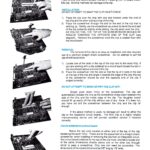
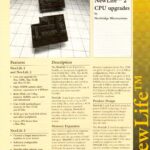
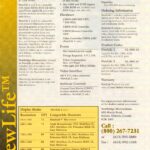
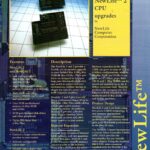
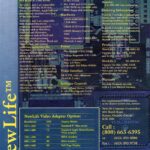
NewLife 2 / Ultramax with Video (NL-0001-01, CD601D)
Developed by Calmos Semiconductor (CD601D) and initially released as the Ultramax with Video, then renamed the NewLife 2 (NL-0001-01).
The NewLife 2 has all the features of the NewLife 1 with the addition of a custom Video Controller CMOS ASIC which provides a standard DB-9 TTL PC compatible video connector that can connect to any one of a number of larger monochrome monitors. A control Panel Device (CDEV) allows you to select the monitor and the screen attributes:
| Resolution | DPI | Compatible Monitors |
|---|---|---|
| 512×324 | 72 | Standard 9″ Mac screen |
| 640×480 | 72 | Apple Monochrome, NEC MultiSync II, NEC MultiSync GS, Princeton MAX-15, Sony Multiscan |
| 720×350 | 80 | NEC MultiSync II, NEC MultiSync GS, Princeton MAX-15, Sony Multiscan |
| 800×560 | 88 | NEC MultiSync II, Princeton MAX-15, Sony Multiscan |
| 640×860 | 80 | Samsung Full Page Display MP5671 |
- Drivers: Video driver 1992 v5.2 (DC4.2 image)
- Manual: 1992: manual the content seems similar to the NewLife 1 manual, with the addition of a section on how to install the video adapter.





NewLife 25 Plus / UltraMax 25 Plus (NL-0025-01)
Developed by Calmos Semiconductor and initially released as the UltraMax 25, and then re-released on July 17th, 1990 as NewLife 25 Plus (NL-0025-01), this accelerator can upgrade a Mac 128K*, 512K*, 512Ke, or the Mac Plus with:
- a 25MHz 68030 processor
- optional 68882 FPU,
- optional SCSI connector (NL-1025-01),
- 4 SIM sockets for memory expansion up to 4 Megabytes
*Note: The Mac 128K and 512K require the 128K ROM upgrade that is included with the Apple 800k internal disk drive kit.
- Drivers: 1993 v5.42: driver (DC4.2 image), GemSTART Universal 7.1, Connectix Compact Virtual
- Manuals:
- Reviews: MacWorld 1990.02 (as UltraMac), MacUser 1990.08 (p.96), Build your own Macintosh and save a bundle 1992, the Macintosh Do It Yourself Upgrade Book 1992,
- Ads: National Capital Macintosh Club Bulletin Vol 6 No 5 (photo), MacUser 1990.08 (p.318, photo)
- MacUser 1990.05 (p.414, photo), MacUser 1990.06 (p.339, photo), MacUser 1990.11 (p.335), MacUser 1991.01 (p.122, photos), MacUser 1991.05 (p.256), MacWorld 1991.07 (p338, photo), MacUser 1991.10 (p.89)
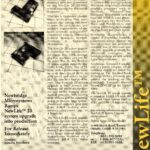
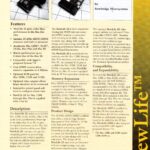
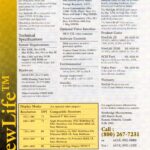
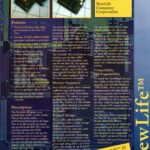
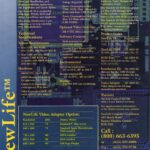
NewLife 16, Plus (CD308E)
Released in early 1992 as a lower cost 16Mhz alternative to the NewLife 25 for the 128K*, 512K*, 512Ke and the Plus. I could not find much information on this othering than the prices and configurations listed in the 1993 Price List:
- a 16MHz 68030 processor (NL-0016-03),
- with optional 68882 FPU (NL-0016-01),
- with optional Video (NL-00016-05, NL-00016-07 without FPU),
- 4 SIM sockets for memory expansion up to 16 Megabytes
*Note: The Mac 128K and 512K require the 128K ROM upgrade that is included with the Apple 800k internal disk drive kit.
Optional Video Adapter (NL-3000-01):
- DB-9 for EGA, MDA monitors
- DB-15 for Apple monochrome
- DB-15s for VGA monitors
| Resolution | DPI | Compatible Monitors |
|---|---|---|
| 512×324 | 72 | Standard 9″ Mac screen |
| 640×480 | 72 | Standard Apple Monochrome, VGA Monitor |
| 800×560 | 88 | EGA monitor |
| 640×860 | 80 | Full Page Display |
| 1024×768 | 80 | Two Page Display |
- Drivers: 1993 v4.7: driver (macintosh diskcopy 4.2 image), GemSTART Universal 7.1, Connectix Compact Virtual
- Manual: 1992 for the Accelerator! Plus, SE, and Classic
- Ads: MacWorld 1992.12 (p. 142, photo)
For the Macintosh SE
NewLife 25 SE / Ultramax 25 SE
Developed by Calmos Semiconductor and initially released as the UltraMax 25 SE, and then re-released on July 17th, 1990 as NewLife 25 SE (NL-0025-01):
- a 25MHz 68030 processor
- optional 68882 FPU,
- optional DB-9 TLL video connector (NL-2025-02),
- 4 SIM sockets for memory expansion up to 4 Megabytes
Installation Notes: The initial release of the accelerator did not fit in the original SE case (apple changed the SE’s case to give it more room, source MacWorld 1992.06 p. 152)
- Drivers: 1993 v5.42: driver (DC4.2 image), GemSTART Universal 7.1, Connectix Compact Virtual
- Manuals:
- Reviews: MacWorld 1990.02 (as UltraMac), MacUser 1990.08 (p.96), Build your own Macintosh and save a bundle 1992, the Macintosh Do It Yourself Upgrade Book 1992,
- Ads: National Capital Macintosh Club Bulletin Vol 6 No 5 (photo), MacUser 1990.08 (p.318, photo)
- MacUser 1990.05 (p.414, photo), MacUser 1990.06 (p.339, photo), MacUser 1990.11 (p.335), MacUser 1991.01 (p.122, photos), Washington Apple Pi Journal 1991.01, MacUser 1991.05 (p.256), MacWorld 1991.07 (p338, photo), MacUser 1991.10 (p.89)





NewLife 33 SE / Ultramax 33 (NL-0033-01 / CD302B).
Developed by Calmos Semiconductor (CD302B) and initially released as by Newbridge Microsystems as the UltraMax 33, and then re-released on July 26th, 1990 as NewLife 33SE (NL-0033-01).
- a 33MHz 68030 processor,
- optional 68882 FPU,
- optional DB-9 TLL video connector (NL-2025-02),
- 256Kb of 25ns static RAM cache and 0 wait states,
- 4 SIM sockets for memory expansion up to 4 Megabytes
Unclear from the documentation if this will work in a SE/30. The brochures mention that the card can automatically configure itself to work with the SE’s 8bit, 16bit and 32bit bus.
- Drivers: 1991 v3.0: driver (DC4.2 image), GemSTART Universal 7.1, Connectix Compact Virtual
- Manuals: 1991: product description
- Reviews: MacUser 1990.08 (p.96), the Macintosh Do It Yourself Upgrade Book 1991.10
- Ads: National Capital Macintosh Club Bulletin Vol 6 No 5 (photo), MacUser 1991.01 (p.122, photos), Washington Apple Pi Journal 1991.01, MacUser 1991.05 (p.256), MacWorld 1991.07 (p338, photo), MacUser 1991.10 (p.89)
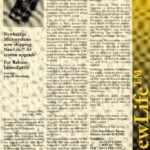
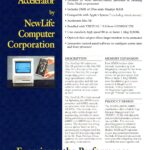
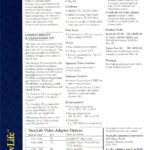
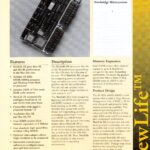
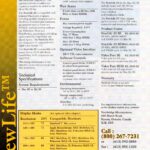
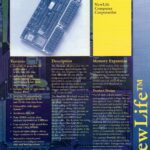
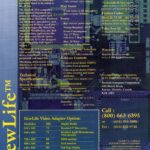
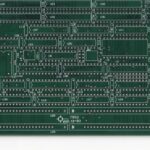
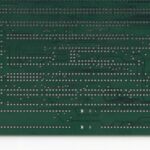
NewLife SE video display (NL-2025-02)
Adds large monitor support to your SE system, and supports a wide variety of monochrome monitors including: full page, Hercules graphics, MDA, CGA, EGA, and VGA monochrome compatible monitors.
Plugs directly in to a standard SE bus connector, and is designed to work with the NewLife 25SE and 33SE system upgrades.
| Resolution | DPI | Compatible Monitors |
|---|---|---|
| 512×324 | 72 | Standard 9″ Mac screen |
| 640×480 | 72 | Apple Monochrome, NEC MultiSync II, NEC MultiSync GS, Princeton MAX-15, Sony Multiscan |
| 720×350 | 80 | NEC MultiSync II, NEC MultiSync GS, Princeton MAX-15, Sony Multiscan |
| 800×560 | 88 | NEC MultiSync II, Princeton MAX-15, Sony Multiscan |
| 640×860 | 80 | Samsung Full Page Display MP5671 |
- Drivers: 1991 video driver (DC4.2 image)
- Ads: MacUser 1991.01 (p.122, photo), Washington Apple Pi Journal 1991.01, MacUser 1991.05 (p.256), MacWorld 1991.07 (p338, photo)
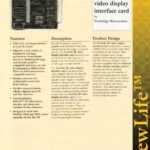
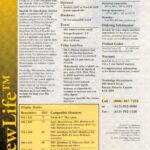
NewLife Accelerator! SE (NL-0016, CD306)
The card (NL-2025-02) adds large monitor support to your SE system, and supports a wide variety of monochrome monitors including: full page, Hercules graphics, MDA, CGA, EGA, and VGA monochrome compatible monitors.
- a 16MHz 68030 processor (NL-0016-04)
- with optional 68882 FPU (NL-0016-02)
- with optional video adapter (NL-00016-06, NL-00016-08 without FPU),
- 4 SIM sockets for memory expansion up to 16 Megabytes
Optional Video Adapter (NL-3000-01):
- DB-9 for EGA, MDA monitors
- DB-15 for Apple monochrome
- DB-15s for VGA monitors
| Resolution | DPI | Compatible Monitors |
|---|---|---|
| 512×324 | 72 | Standard 9″ Mac screen |
| 640×480 | 72 | Standard Apple Monochrome, VGA Monitor |
| 640×860 | 80 | Full Page Display |
| 800×560 | 88 | EGA monitor |
| 1024×768 | 80 | Two Page Display |
- Drivers: 1993 v4.7 driver for the 16Mhz version (macintosh diskcopy 4.2 image), GemSTART Universal 7.1, Connectix Compact Virtual
- Manual: 1991 for the Accelerator! Classic and SE, 1992 for the Accelerator! Plus, SE, and Classic
- Reviews: the Macintosh Do It Yourself Upgrade Book 1992, MacWorld 1992.06 (p.152), MacUser 1992.08 (p.40 buyers guide), MacUser Buying Guide 1993.01 (p.236), Turbocharge your Mac! by Carla Rose 1994
- Ads: MacUser 1991.09 (p.89), MacUser 1991.11 (p.137), MacWorld 1992.03 (p.119, photo), MacWorld 1992.12 (p. 142),
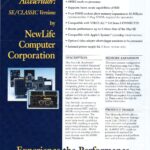
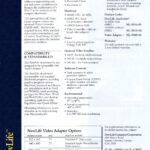
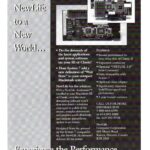
For the Macintosh Classic
NewLife 25CL (NL-0025-03)
I’m not sure if this was ever sold, I only have the announcement brochure, but I have not found any advertisements, and it was not included in the June 1993 price list. It may have been rebranded as the Accelerator! Classic and released with a lower speed CPU (see below).
- a 25MHz 68030 processor,
- optional 68882 FPU,
- optional SCSI Port (NL-1025-02)
- optional Video connector (NL-2025-03),
- 4 SIM sockets for memory expansion up to 16 Megabytes
Driver: 1993 v5.42 driver for the CL (macintosh diskcopy 4.2 image), GemSTART Universal 7.1, Connectix Compact Virtual
Ads: MacUser 1991.09 (p.89), MacUser 1991.11 (p.137)
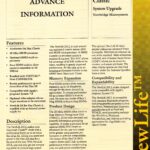
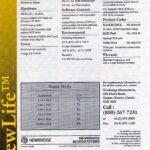
NewLife Accelerator! Classic (NL-0016, CD309A, CD309B)
This appears to be a cost reduced version of the NewLife 25CL running a slower processor.
Requires additional power, so it was bundled with an additional small PSU
- a 16MHz 68030 processor (NL-3016-02, CD309A)
- a 20MHz 68030 processor (NL-3016-02, CD309B)
- with optional 68882 FPU (NL-3016-01)
- with optional video adapter,
- 4 SIM sockets for memory expansion up to 16 Megabytes
Optional Video Adapter (NL-3000-01):
- DB-9 for EGA, MDA monitors
- DB-15 for Apple monochrome
- DB-15s for VGA monitors
| Resolution | DPI | Compatible Monitors |
|---|---|---|
| 512×324 | 72 | Standard 9″ Mac screen |
| 640×480 | 72 | Standard Apple Monochrome, VGA Monitor |
| 640×860 | 80 | Full Page Display |
| 800×560 | 88 | EGA monitor |
| 1024×768 | 80 | Two Page Display |
- Drivers: 1993 v4.7 driver for the 16Mhz version (macintosh diskcopy 4.2 image), GemSTART Universal 7.1, Connectix Compact Virtual
- Manual: 1991 for the Accelerator! Classic and SE, 1992 for the Accelerator! Plus, SE, and Classic
- Reviews: the Macintosh Do It Yourself Upgrade Book 1992, MacUser 1992.05 (p.71), MacWorld 1992.06 (p.152), MacUser 1992.08 (p.40 buyers guide), MacUser Buying Guide 1993.01 (p.236), MacUser 1993.09 (p.261), Turbocharge your Mac! by Carla Rose 1994, by Eric Bylenga
- Ads: MacWorld 1991.11 (p.279), MacUser 1991.12 (p.220), MacWorld 1991.12 (p.231), MacWorld 1992.03 (p.119, photo), MacWorld 1992.12 (p. 142),



For the Centris 610 (unrelease)
Announced, but not released accelerator for Centris 610 systems:
- a 40MHz 68040 processor,
- TuboSIMM sockets for memory expansion up to triple the 610

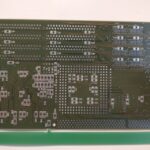
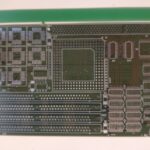
About NewLife Computer Corperation
In 2019 I picked up two Macintosh Plus machines with NewLife Quik30 / Novy Quik30Plus accelerators installed and started searching for information about them. Unfortunately I quickly found out that they either never had a website, or their website was gone before 1996 when the wayback machine started backup up the web. I did find a copy of the website for their parent company Newbridge Networks Corporation, but the product catalogue I found there did not contain any information on NewLife or the NewLife accelerators.
Luckily thanks to the internet archive I was able to find some information in older magazines and reference books, and as I searched I started putting together a list of the the various accelerators I came across.
But, I was hoping for more, there was still a lot cards with no manuals, or missing enablers. So, in 2022 I decided to start trying to reach out to past employees through LinkedIn.
NewLife is my first major success with that approach, I was able to get in contact with Lincoln Henthorn the general manager and later the company president, and he provided me with boxes of advertisements, manuals, and diskettes to use as source material for this post.
Company history 1983 to 1995
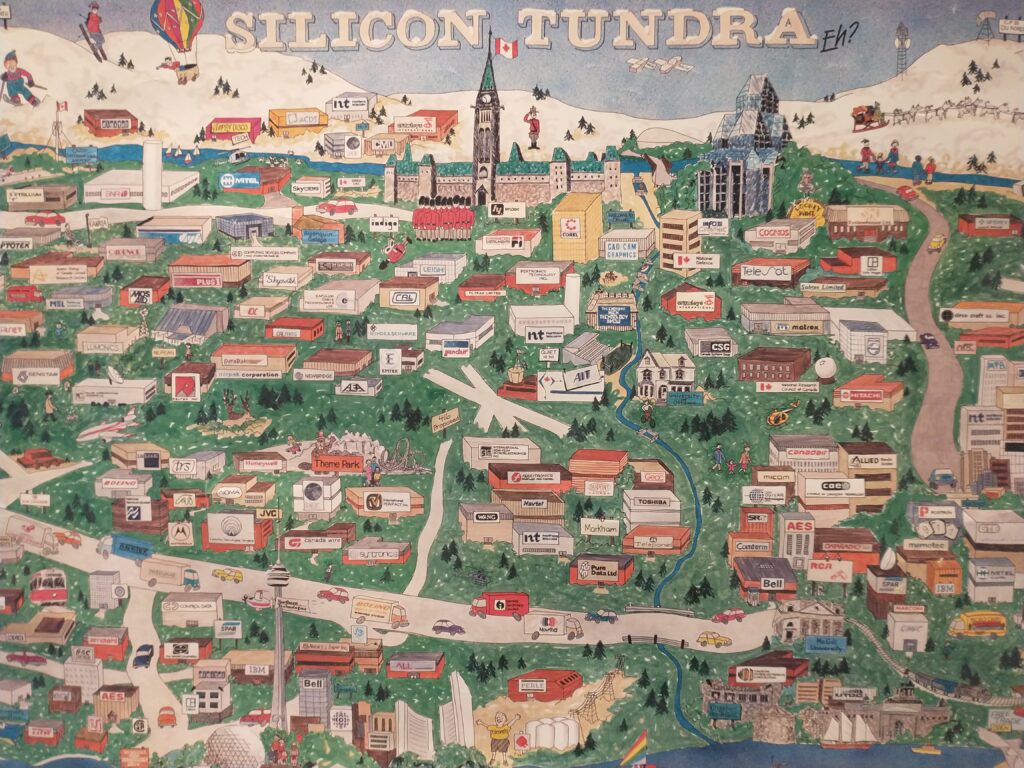
From what I’ve found online and what Lincoln has told me, the development of the NewLife accelerators involved several companies and licensing agreements. The following is what I’ve been able to piece together.
In 1983 John Roberts founded Calmos Systems, Inc. located at 20 Edgewater Street, Kanata Ontario a manufacturer of high quality semiconductor components for the Wireless, Video, and High Speed Digital Data Transmission Industry.
In 1985 John Roberts decided to step aside and Adam Chowaniec (previously the vice-precedent at Commodore International) took over (source: Ottawa Citizen Article, Figure 1).
In 1986 Lincoln Henthorn (my contact for all of this through LinkedIn), president of LSJ Microtechnology Corp. located in Nepean, created a new division called UltraMac Conversions (or Ultra Mac), which designed, manufactured, and provided peripherals for Apple’s Macintosh Computers. (source: 1989 Ottawa Citizen Article referring to three-year-old UltraMac, Figure 5., and Figure 2. an advertisement from November 21 1987 in the Ottawa Citizen)
“LSJ did the original UltraMac memory upgrades for the 128K Mac. I actually reworked the motherboards to remove the memory chips and add 512K chips and a daughter card to go to 1 Meg.”
LinkedIn discussion with Lincoln Henthorn
In 1988 Calmos Systems Inc. purchased the product line from Siltronics (source: Ottawa Citizen Article, Figure 3), and created a new subsidiary called Calmos Semiconductor to focus on production, while the parent, Calmos Systems Inc., would focus on research and development. (source: Ottawa Citizen Article, Figure 4)
In 1989 Calmos System’s purchased UltraMac Conversions from LSJ Microtechnology Corp. and renamed UltraMac Conversion to Calmos Data (source: Ottawa Citizen Article, Figure 5)
“The Mac upgrades where developed at Calmos as a commercial venture. Calmos was a contract IC developer who purchased select assets from the demise of Siltronics. I ran the data products division at Calmos.”
LinkedIn discussion with Lincoln Henthorn
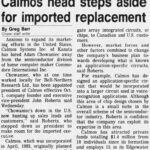
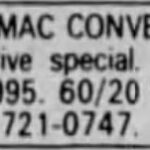
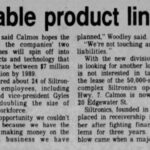

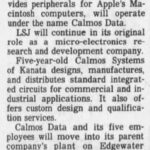
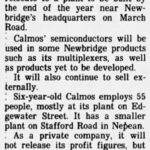
In early to mid 1989, Calmos Systems Inc (and Data and Semiconductor) was acquired by Newbridge Networks (source: Ottawa Citizen Article, Figure 6, and wikipedia), and was renamed to Newbridge Networks Corp:
Newbridge Networks, Inc. has acquired Calmos Systems Inc. of Ontario. The Canadian company, renamed Newbridge Microsystems, will operate as a separate division, designing and marketing semiconductor components and subsystems for internationally distribute data communications and processing products.
Computerworld 1989-06-12 Vol 23 Iss 24
In September of 1989 Newbridge Microsystems announced their new product line under the brand name Ultramax:
Newbridge Microsystems of Ottawa, has unveiled their new line of enhancement products for the Macintosh. The company says the Ultramax line includes a range of products such as memory upgrades and compact interior/exterior hard disk products
Enhancements for the Mac Family: Computer Data 1989-09 Volume 14 Issue 9
In January 1990 Newbridge Microsystems created NewLife Computer Corporation to take over the marketing and sale of the accelerators, and in April of 1990 Newbridge rebranded the Ultramax line to NewLife (April was listed as the first use date for the trademark filing).
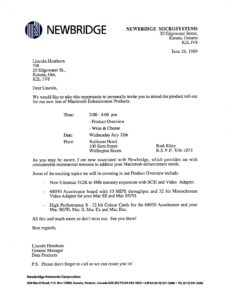

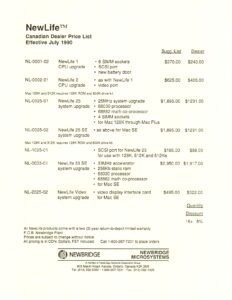
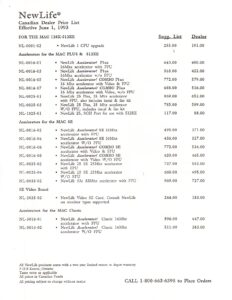
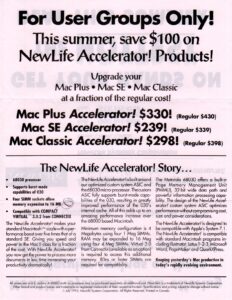
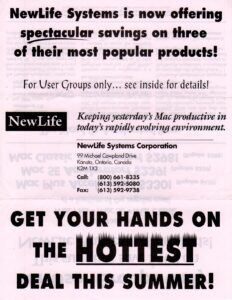
The last two mentions I found for NewLife accelerators are the February 1995 MacWorld article: Making the move to PowerMac: Bye-Bye accelerators, that states NewLife is focusing on inexpensive upgrades, and that Novy Systems has stopped selling accelerators, and then another mention in the July 1997 MacUser article: Never Say Die, Lifesaving measures for your old Mac that metions that NewLife accelerators for the 512Ke, Plus, and SE are still being sold.
I believe there are two main reasons for the death of the 68k accelerator market:
- The launch of the new PPC hardware
- The launch of System 7.5.x with it’s new memory manager that was not compatible with the existing enablers. Many of the accelerators still partially work under System 7.5.x and provide CPU acceleration, but the extra memory they provided was not accessible.
In December of 1995, Newbridge Microsystems was taken over by Tundra Semiconductor (website from 1997) led by Adam Chowaniec, I could not find any information to indicate if NewLife Computer Corporation was included in that sale or not.
Licensing Agreement with Novy Technologies?
According to Build Your Own Macintosh and Save a Bundle 1992 NewLife licensed technology from Novy Technologies. According to Lincoln, this is not true. Calmos and later NewLife forward engineered the accelerators based on the 68000 data sheets and the 68030 specs and created their own video ASIC and integrated Virtual to expand the memory.
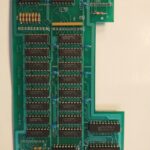
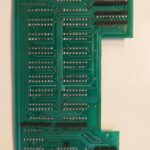
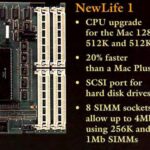
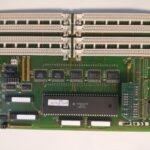
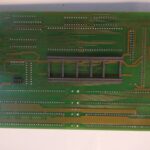
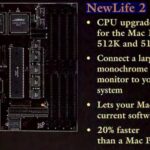
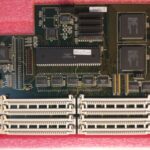
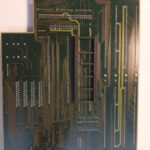
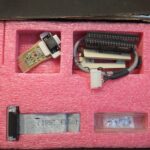
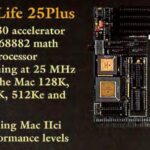
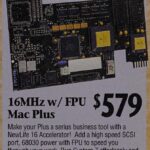
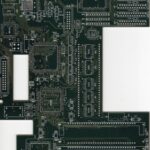
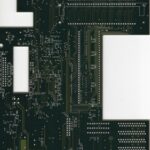
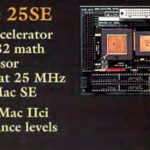
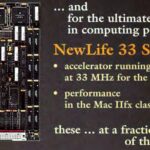
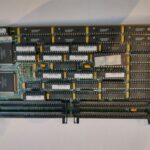
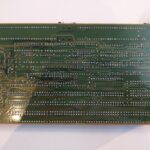
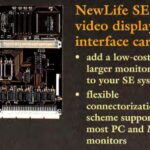
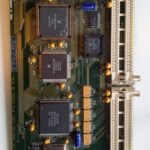
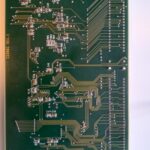

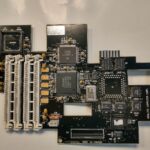
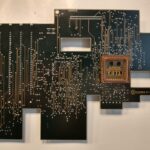
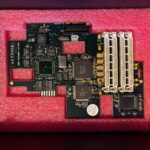
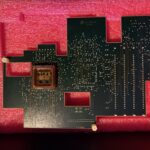
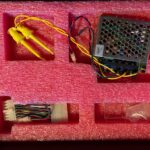
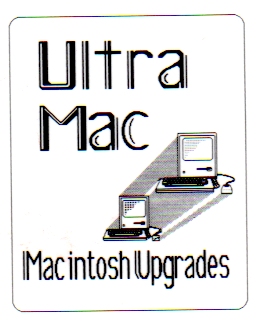
I ran an UltraMac 68030 (maybe 68020?) accelerator on a 128k based Hackintosh (ref. Computer Shopper magazine) in the early 1990s. I had stability issues with my first board. Being based in Ottawa at the time I was able to contact Lincoln directly and he arranged to swap my troublesome board with a unit from their lab, complete with numerous jumper wires. The board had a Killy clip that fit over the 68000 CPU, NCR5830 SCSI chip, 4MB of ram and video output for a 2-page monochrome white monitor made by Ikegami (21 inch?). I used Mac SE ROMs and updated onboard RAM to 512K with a Dr Dobbs style modification to get the additional address signal for 41256 RAM chips.
Sorry, NCR 5380.
“4 SIM sockets for memory expansion up to 4 Megabytes ”
I believe the above is an error with respect to the NewLife 1.
I installed two of those many many years ago.
They had 8 SIMM sockets. The Mac still only went to 4 MB of RAM, but the 512K on Fat Macs was used. So, one could populate the sockets with eight 256KB SIMMs to get 2.5 MB, or one could install two 1 MB SIMMs and six 256K SIMMs to get a total of 4 MB.
In that time frame, 256KB SIMMs were almost free and 1 MB SIMMs were still in the $100/ea realm, so it was quite an economy.
I haven’t read teh addendums for the manual, but I do remember that the jumper diagram was upside down or some such. Jumpers had to be configured so support whatever SIMM arrangment one had.
It’s possible it supported up to 8MBs with the use of Virtual Compact. There were similar accelerators with 8 SIMM slots. The Mac would only see the first 4MBs, but Virtual Compact would turn the remaining 4MBs into a RAM disk on which it would then use for Virtual Memory (so no loss in speed since it’s storing the VM on a RAM disk.) It’s a cleaver trick to add more RAM without sacrificing speed like traditional VM solutions. 🙂
Didn’t you need the PMMU of a 68030 for Virtual to work?
In any case, unless I missed it at the time, Newlife only listed up to 4MB of memory capacity.
I bought the 16MHz version for the Plus in 1995. It came with SCSI in addition to the 4 RAM sockets. I did not get the optional external video option. I still own it and the Plus to this day.
I remember phoning Lincoln in 1995 to get tech support. I asked him how sales were, considering the Plus was a 9 year old machine at the time, and he told me he was working on a huge order for a Japanese school.
It seems as if the link to the Accelerator SE driver is wrong? Points to version 5.42 of the 25 driver.
Fixed
Unfortunately, it appears to be still pointing to the wrong download.
I checked my archive version 5.42 is the last version I have, there was an error in the text of the link, it has been corrected to say 5.42.